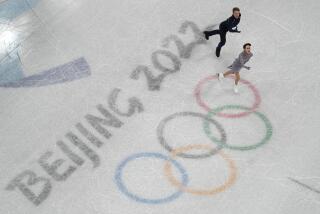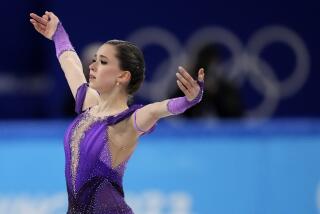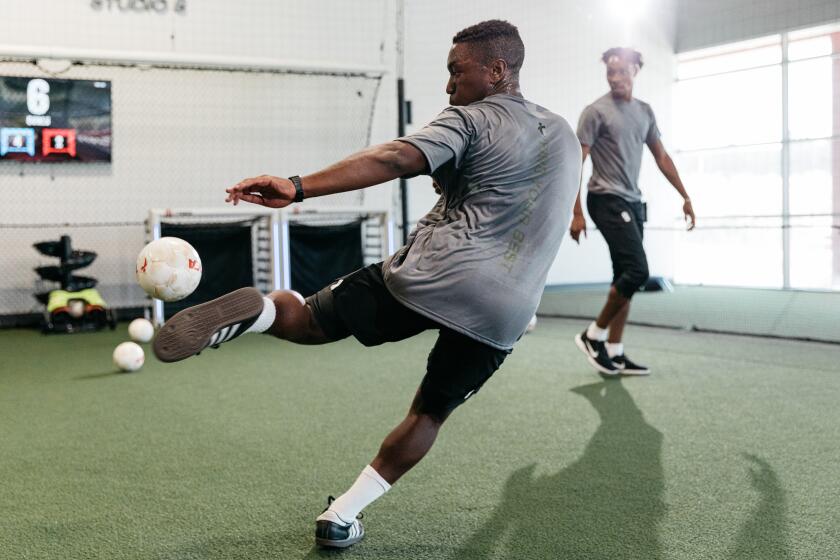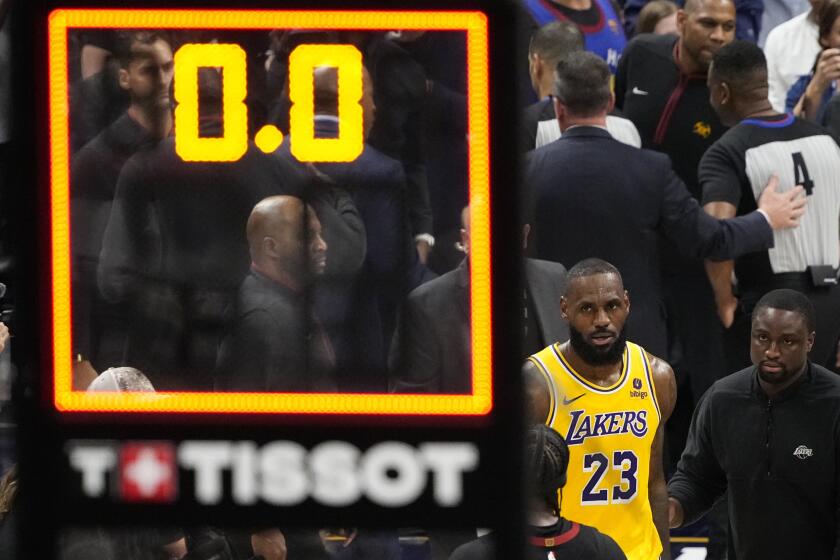U.S. Speedskating tries to track what went wrong at Sochi Olympics
SOCHI, Russia -- The failure of U.S. skaters to win a medal in long-track speedskating in Russia came on the heels of one of the country’s most successful World Cup seasons in years, with 28 medals.
How did it all go so wrong? The U.S. Olympic Committee already has promised a thorough investigation, though it also had made clear its support for its partnership with Under Armour and extended its contract through the 2022 Games. U.S. speedskating officials said they will wait for a full analysis.
“The mature people in U.S. Speedskating will take the responsibility,” said Kip Carpenter, a national team coach who won a bronze medal in the 500 meters in 2002. “Coaches will take responsibility. Athletes should take responsibility. Long-track upper management should take responsibility.”
FRAMEWORK: Best images from Sochi
Long-track upper management begins with Finn Halvorsen, 66, the director of U.S. Speedskating’s high-performance team.
He and speedskating’s governing body now are facing questions not only about racing suits but also training programs, including how skaters balance time at altitude and at sea level. Experts also questioned U.S. skaters’ technique at sea level on the Adler Arena ice.
“It is really, really bugging me that we have not performed well,” Halvorsen said. “It is very tough.”
U.S. Speedskating’s Olympic preparation was mapped out four years ago. About 300 pages, the document was submitted to the USOC for approval. Annual updates and progress reports followed. The process determines funding by the USOC.
Halvorsen took the lead in crafting the plan, but it’s up to U.S. Speedskating’s coaches, trainers and specialists to implement it. Halvorsen’s job includes providing guidance, monitoring athletes’ progress and analyzing equipment.
The U.S. plan predicted six medals in Sochi.
Expectations were lower for short-track after the retirement of Apolo Ohno, America’s most decorated Winter Olympian.
Short was coming back from the divisive skate-tampering scandal. Mike Plant, U.S. Speedskating’s new president who also works for the Atlanta Braves, led a reorganization and hired Ted Morris as chief executive in September.
The picture looked brighter with long-track.
Four-time Olympic medalist Shani Davis was a heavyweight contender coming in, as were the world’s two top-ranked female skaters, Heather Richardson and Brittany Bowe. But none of the 17 skaters finished higher than seventh in any event.
After half of the races in Sochi, long-track skaters ditched their Under Armour race suits that the company had marketed as the fastest ever. A frenzied 48 hours followed, including a U.S. Speedskating memo to skaters of “talking points” supporting Under Armour. Skaters decided as a group to wear different Under Armour suits worn during World Cup races.
Little changed except the suits. Racers conceded their confidence had been damaged. Privately, they said, skaters were frustrated.
When the results didn’t change, the questions did. If it wasn’t the suit, was it training at an outdoor track in the Italian Alps for 10 days shortly before coming to Sochi?
“Altitude’s not an issue,” U.S. national team coach Ryan Shimabukuro said. “We’ve performed at sea level.”
If it wasn’t a suit or altitude, was it something else?
“I have been staying up late at night evaluating everything,” Halvorsen said last week.
While the U.S. team struggled to find answers, competitors took notice.
Six coaches of foreign teams, including the record-setting Dutch, said they saw U.S. skaters take wide, sweeping strokes, a sign of competing in high altitudes.
In Sochi, U.S. skaters “don’t seem to get a good feeling in the ice, and they don’t seem to be able to skate with a good rhythm,” said Canada’s Mike Crowe, who has coached with Halvorsen in Canada and the U.S.
The trend that matters most to the USOC — U.S. athletes winning Olympic medals — has been headed downward.
After winning eight in Salt Lake City’s high altitude in 2002, the U.S. won seven medals four years later in Turin, Italy.
The team won just four medals in Vancouver in 2010, with only one by a skater who trained at high altitude, Chad Hedrick.
”
Coaches and skaters have begun questioning the wisdom of U.S. Speedskating’s leadership. Perhaps the skaters peaked too early. Arguments for additional sea-level training away from Salt Lake City resurfaced from skaters and coaches who train in Milwaukee, where Halvorsen had a camp last fall.
Said three-time Olympian Maria Lamb on Wednesday: “Finn Halvorsen has done a lot of damage the way he has single-handedly perhaps destroyed so many good athletes … due to a lot of his calls and actions.”
Twitter @jaredshopkins
More to Read
Get our high school sports newsletter
Prep Rally is devoted to the SoCal high school sports experience, bringing you scores, stories and a behind-the-scenes look at what makes prep sports so popular.
You may occasionally receive promotional content from the Los Angeles Times.






